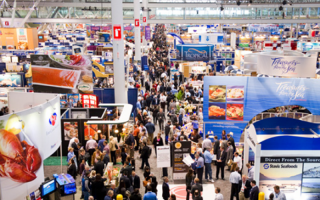The reefer trade sector is key in South African economy
FOR BLOGGERS and PARTNERS.
Do you want to manage Reefer Trade between Russia MENA and rest of Africa?
or your African country in mobile games industry?
Contact us here, mayado@sylodium.com for be our blogger managing Russia - Middle East – Africa reefer trade, so managing all the niches related you choose: Ghana – Russia reefer shipping, Nigeria reefer ships, SA – Ukraine fresh shipping business, Africa – GCC cargo fresh veggies, etc, etc, endeless related
Another option is being our collaborator in your African country if you consider as a good thinker, visionary, hard studious, you can become our blogger or our partner in Nigeria, Tanzania, South Africa, Egypt in relationship with Russia, any former Soviet country, or any MENA country…. contact us. mayado@sylodium.com
FOR COMPANIES AND INSTITUTIONS:
Tap our unique Crossing System. SYLODIUM: the business language
High demand for South African fruit drives reefer market
New from bizNisAfrica.com
The reefer trade (refrigerated cargo solutions) sector contributes positively to the South African economy by creating employment and stimulating economic growth.
This is according to Matthew Conroy, Trade Manager of Maersk Line Southern Africa, a member of Maersk Group, who says that even though 2016 saw the South African reefer market contract by about 3%, largely due to lower crop yields of citrus caused by the severe drought experienced across the region – refrigerated container trade still makes up about 19% of total South African container exports.
He explains that the reefer trade sector connects South Africa’s shopping trolley,the agriculture sector, to the rest of the world. “South Africa’s moderate climate make it the ideal location for fruit farming, which makes up over 90% of total reefer exports.
“The large majority of produce that gets exported via reefer containers from South Africa is fruit, consisting mainly of citrus and deciduous varieties. Citrus fruits such as lemons and oranges make up the bulk of this trade, accounting for about 58%, while deciduous fruits such as apples, pears and grapes make up around 35%.
Citrus crops are sourced from throughout the country, while deciduous crops – particularly grapes – are found predominantly in the Western Cape.”
Maersk Line Southern Africa has over 80 years of experience in shipping fresh produce.
“Transporting perishable goods halfway around the world can be challenging but our profound understanding of reefer transportation, combined with the best service and new technologies, gives our customers peace of mind,” adds Conroy.
In contrast to the thriving reefer export trade, Conroy says that reefer imports for South Africa are very low.
“Total reefer imports that South Africa receives are in single digits. Operationally, because of the imbalance, we actually bring thousands of empty reefer containers into South Africa just to service our strong reefer export market.”
Conroy says that in terms of demand, the European continent receives close to 60% of South Africa’s reefer exports, a market which has been very consistent over time.
“Our biggest importer region would be the EU, which receives around 35%, while the UK and Russia receive roughly 15% and 7% respectively. Other import regions include Asia (17%), the Middle East (16%), Intra-Africa (5%) and North America (4%). The market has experienced no major shifts in demand with this split having been largely the same over the past five years.”
While South Africa is still experiencing extremely dry conditions in certain regions, Conroy concludes that moderate growth can be expected in 2017.
“South African fruit is in high demand globally, so the market decline is more a reflection of the reduced crop output associated with the drought. As fruit farms are spread across the country and the drought has impacted each of these regions differently, the full impact of the drought on 2017 produce remains unknown. While this impact is very much dependent on water supply, our initial estimate is that there will be mid-single digit growth.”


